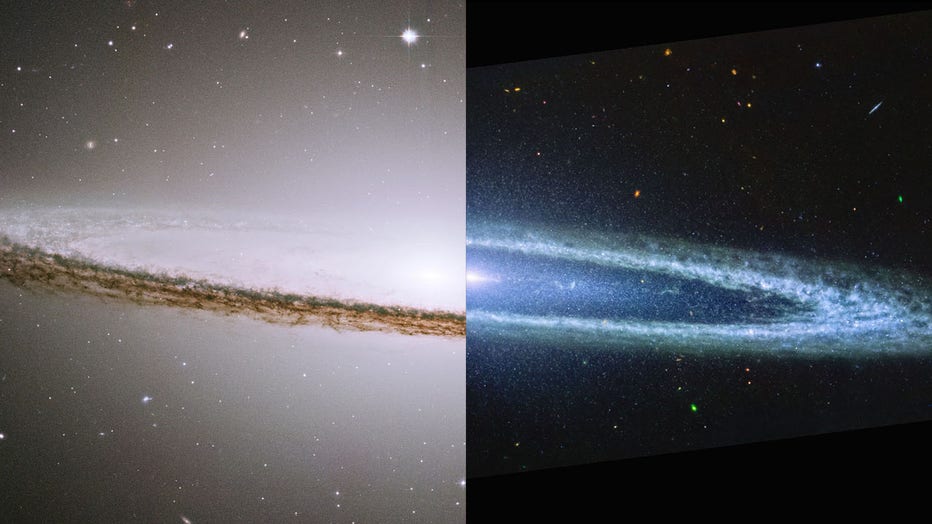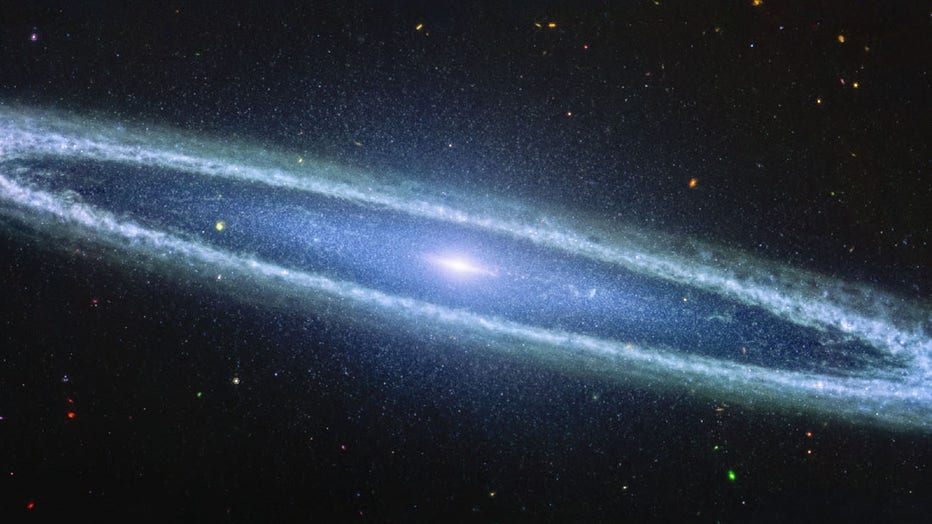NASA’s Webb snaps new pic of ‘Sombrero galaxy’

This image compares the view of the famous Sombrero Galaxy in mid-infrared light (right) and visible light (left). NASA’s James Webb Space Telescope’s MIRI (Mid-Infrared Instrument) reveals the smooth inner disk of the galaxy. (NASA)
NASA’s James Webb Space Telescope has returned a new image of a galaxy around 30 million light-years from Earth.
It’s called Messier 104 (M104), but is more commonly called the Sombrero galaxy because of its resemblance to the broad-rimmed Mexican hat. Though, in Webb’s newer, sharper photo, the galaxy appears more like an archery target, NASA noted.
Side-by-side photos show how much stronger the Webb telescope is than the Hubble, its predecessor, allowing us to see areas in outer space like never before.

This image compares the view of the famous Sombrero Galaxy in mid-infrared light (right) and visible light (left). NASA’s James Webb Space Telescope’s MIRI (Mid-Infrared Instrument) reveals the smooth inner disk of the galaxy. (NASA)
RELATED: Astronomers take the first close-up picture of a dying star outside of Milky Way
Galaxies of varying shapes and colors can be seen in the background of the Webb photo. The different colors of these background galaxies can tell astronomers about their properties, including how far away they are.
At the galaxy’s center is a supermassive black hole, which consumes various materials from the galaxy.

The sharper resolution also brings into focus the galaxy’s outer ring, which tells scientists how the dust is distributed. Dust is an essential building block for astronomical objects in the universe.
The Webb uses technology called MIRI (Mid-Infrared Instrument) to capture the photos at this quality.
RELATED: Look (safely) at the Sun's surface in the highest-resolution images yet
The telescope was launched into space on Christmas Day in 2021, where it sits and observes.
Recently, scientists from all over the world applied for observation time with Webb during its fourth year of operation, which begins in July 2025, NASA said.
A record-breaking 2,377 proposals were submitted this fall, according to NASA, requesting about 78,000 hours of observation time.
The proposals covered a wide array of science topics, with distant galaxies being among the most requested observation time, followed by exoplanet atmospheres, stars and stellar populations, then exoplanet systems.
The Source: Information in this article was taken from a NASA press release on Nov. 25, 2024. This story was reported from Detroit.

